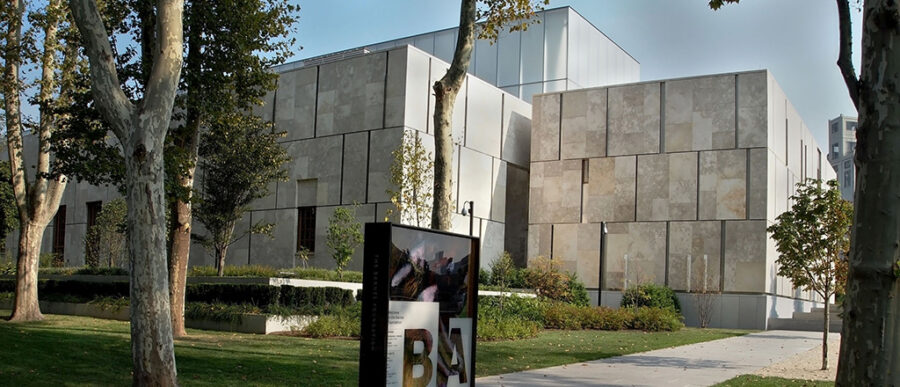The Barnes Foundation houses one of the finest collections of impressionist, post-impressionist and early modernist paintings in the world. It is also an institution geared towards education in the fine arts and horticulture. When the museum moved locations from the suburbs of Philadelphia to downtown Center City in 2012, its membership jumped from around 400 to 20,000 while the number of annual visitors more than tripled.
Over time, those numbers have fluctuated, and the museum found itself in need of help to better understand and forecast attendance. That’s where Wharton Customer Analytics comes in: WCA’s Analytics Accelerator Challenge, which pairs student teams with nonprofit and for-profit organizations to offer analytics-based solutions to problems, was able to help the Barnes create a predictive model that incorporates pricing, revenue projection, visitation and attendance behavior, products and offers. Using the model, the students were able to make predictions about the museum’s attendance, including a “do nothing” scenario that predicted a 10% year-on-year decline and a scenario that showed a 1% discount in ticket price would lead to a 1.5% increase in attendance.
Margaret Zminda, executive vice president, chief financial officer and chief operating officer of the Barnes Foundation, recently visited the Knowledge at Wharton radio show on SiriusXM to discuss the transition and the increased role of analytics in business. She was also a speaker at the recent Wharton Customer Analytics Conference.
An edited transcript of the conversation follows.
Knowledge at Wharton: How is the relationship you have with Wharton Customer Analytics having an impact on what the Barnes tries to do on a day to day basis?
Margaret Zminda: We were very fortunate to be introduced to Wharton Customer Analytics in the fall of last year. We found ourselves now seven years into our move to Philadelphia, with our revenue declining, and that is not unusual for institutions that open a new building or do something very different.
But we began to be concerned that we couldn’t see where bottom would be. And with a limited data set, we didn’t have the tools or the staff to really help us think about how to implement a model for predicting our revenues. And that is when we were introduced to the team.
We handed them a big pile of data, and of course we said, well we would like to know about our customer behavior, we would like to know about pricing, we would like to know about this, we would like to know about that. And the students then reminded us that it was a four-week project, so perhaps we needed to tailor at least this first project to something that was achievable and deliverable, and they did a fantastic job.
Knowledge at Wharton: How much of a challenge is it for institutions like the Barnes to really understand the data that they have available?
Zminda: More and more — and it’s interesting, one of the speakers at the conference this morning talked about how you used to be able to put your finger up in the air and figure out what was going to happen. And I think we have come to the realization that that is not sufficient anymore. You may have good instincts about how many people you think will come, but instinct isn’t enough.
I think the issue is that we have a lot of data: How do you organize it, and how do you present it so that it is understandable and then actionable in terms of a decision about pricing or a decision about an exhibition, or a decision about timing of certain things that you are going to do? That is the thing that the analytics team has sort of made us rethink in a very different way than we had before.
Knowledge at Wharton: As a nonprofit, do you also find that you are having to consider more business-side factors than in the past?
“You may have good instincts about how many people you think will come, but instinct isn’t enough.”
Zminda: The chair of our board is very business oriented. So thinking and feeling is interesting, but data really saves the day. I think our board has challenged us, even with the size of our staff, which is less than 100 people, to really harness the power of the data that we have, and to think much more analytically about where we are going forward.
My background is not in the fine arts. I am not an MFA; I have an MBA from the Booth School of Business in Chicago. I spent 20 years in the manufacturing sector before I went into the not-for-profit sector. And I think that is a trend that you see in a lot of not for profits, where the chief — the CEO or the person who is leading the institution — is more on a mission. In the orchestra world they are musicians, in the fine arts world they are former curators. But that complementary pairing with a business person is really a competitive advantage, I think.
Knowledge at Wharton: Where do you think you have used your background to make the most impact on the Barnes?
Zminda: When I came to the Barnes, we had a staff of 38. I would say that the financial control structure was not strong. Budgets were done in the closet by the CEO; they weren’t shared broadly with the staff. And I think when you come from the for profit world, there is a much more distributed thinking about how you run the business. And I think that is the big change that I brought to the institution.
The other thing that is so important is that it is incumbent upon finance people to be able to communicate financial results to the rest of the institution, as well as to the board, and to make it understandable. Not everybody is a business person. And so I think that is a skill that isn’t always evident in finance people, and I think that it is one that is absolutely crucial.
I was in a public company for many years, and I was the treasurer and investor relation instructor in my last role. So you are on analyst calls, you are doing quarterly conference calls. You are used to communicating financial results. And I think in the not-for-profit world, that isn’t always as transparent as it kind of needs to be.
Knowledge at Wharton: How do ticket sales and subscriptions play into the overall budget structure for arts institutions?
Zminda: Some of that depends on the capital structure of the institution. There are a lot of arts institutions that are very well endowed. So the take from ticketing or retail or events is not as essential to their day-to-day financial results. For us, we have an endowment that is small in comparison to some of our peer institutions. It funds about 17% of our operating budget.
We need the ongoing revenue from both the gate as well as from annual fundraising. It is important, and frankly we have a very strong commitment to produce a balanced budget. And we have done that in every year since we have been on the Ben Franklin Parkway.
Knowledge at Wharton: In terms the location where you are right now, with the building that has been there for a few years, you are about a quarter of a mile or so from the Philadelphia Museum of Art, which is well known by so many people around the world as well. How does that relationship work between the two institutions?
Zminda: Well, it is interesting because when we opened in 2012, it was at the same time that the Philadelphia Museum of Art was reopening their Rodin Museum. They had done a big renovation then. And I think that timing was purposeful. It allowed for the Rodin to piggyback off of our opening.
We really feel — and I think the folks at the Philadelphia Museum of Art would say — that a rising tide raises all boats. The more activity that there is on the Parkway, the better it is for everyone. We’re actually doing a promotion this summer with the PMA, where if you buy a combination ticket to both the Barnes and the PMA, there is a discount structure in place for that. We love to promote that for both — primarily for folks who live in town, but as well as for the tourist population.
“It is incumbent upon finance people to be able to communicate financial results to the rest of the institution, as well as to the board, and to make it understandable.”
Knowledge at Wharton: How do you think analytics will continue to help develop institutions like the Barnes and other fine arts institutions?
Zminda: There are folks in our sector who are doing a way better job of using analytics than we are. I will be the first to admit it. There is a group at the Art Institute of Chicago who are doing some really groundbreaking stuff in terms of prediction of admissions, and the factors that go into it.
Increasingly, the donor community is really looking for measurable outcomes from institutions like ours. So that is the way that you communicate: You have an outcome, and you measure it and you are able to talk about what your impact is. So there is no question that from a donor relations perspective, which is where a lot of institutions like ours gain their support, it is becoming an increasingly important part of what we do.
I also think that it’s not just the numbers. You have to bring your experience, you have to bring your history, you have to bring all of those other things together. But to the extent that you can synthesize the data as well as your intuition and your understanding of the business, that is where the really powerful knowledge comes out.
Knowledge at Wharton: Even though you have the strength of the data behind it, is there still an element of personal belief, of personal experience, that has to play into the decision process?
Zminda: I think that is right, and I think that is really important. But you also have to be able to articulate what that is. You have to be able to talk about what your experience is, and how it shapes the way that you look at and understand outcomes of the data. I think that is really important.
Knowledge at Wharton: How does the Barnes Foundation handle messaging for the different generations that might interact with it, from donors who are baby boomers to those that are from Generation X or millennials?
“You have to be able to talk about what your experience is, and how it shapes the way that you look at and understand outcomes of the data.”
Zminda: I think younger donors particularly want to see their money at work. And I would say the beauty of an institution like the Barnes is that we are small. So for us a $25,000 contribution is a big impact contribution. At other institutions where the operating budget is larger, and the institution is bigger, the infrastructure is bigger, it is a little harder to see. We think hard about how we can demonstrate impact. And for a lot of younger donors, it is about the numbers.
Knowledge at Wharton: In addition to donors and visitors, where else does analytics come into play as part of the museum’s operations?
Zminda: It is a real, living, breathing business. Our earned revenue from admissions is $3 million to $4 million a year. We do another almost million dollars in catering revenues and commissions. We do another million, million and a half in sales in our gift shop. So all of those things, we look at margins, we look at inventory turns, we look at cost, we look at all of the things that any other living, breathing business looks at.
I think the piece that we have to get at, and this is where I think we will have an ongoing project with the folks at Wharton, is to really understand the behavior of our customers in a much deeper way than we do. We want to understand how many times a year somebody comes to visit, who maybe isn’t a member, and how can we then solicit them for a membership.
And then how can we move them up the membership chain … and how do we research them to understand their capacity to support the institution in a different way? All of that is the piece that we haven’t gotten to yet. And I would say that there are institutions that are in our sector who are ahead of us on that.
We would love to be everybody’s favorite arts institution in Philadelphia. Or in the world. So how do we create that loyalty, how do we put programs on that make you want to come back, how do we have the right merchandise in the shop so we know that when you come you will support the institution in that way?
Knowledge at Wharton: What is the balance of promoting the Barnes to visitors to Philadelphia versus people who live in the area?
“It’s not just the numbers. You have to bring your experience, you have to bring your history, you have to bring all of those other things together.”
Zminda: I actually think that the Barnes is more well known outside of Philadelphia than it is inside Philadelphia. When I walk through the galleries on many days, the number of foreign languages that I hear being spoken in the galleries, and the number of different accents that I hear is sort of astounding — particularly in the summer and the early fall.
And I think we certainly are known by a lot of folks in Philadelphia. There was a little bit of controversy surrounding our move…. So I think the trick now is to take knowledge and put it into action — to create the urgency to have people say, “Ah, that is a place I need to go to; I haven’t been there yet.”
Knowledge at Wharton: Touching on that move specifically for a second, that was a unique moment I guess in the development of the Barnes Foundation. For people who don’t know this, the [original] Barnes was in the suburbs of Philadelphia, on a small suburban street next to private homes. So this was a 180-degree move, from a small suburban street to downtown Philadelphia on a major thoroughfare where you see tens of thousands of cars every day.
Zminda: Somebody compared it for me like going from using the garden hose to using a firehose. And that is the way that it felt. I mean, the change in the institution — it’s not just about the building, it’s about the depth of programming that we offer, it’s about the scope of our service to the community, it’s about the number of visitors that we see. The maintenance of a building that is eight times larger than the building that we had in Merion, PA. Everything about the institution has changed. The move was a complete game changer.
“I think younger donors particularly want to see their money at work.”
We did our level best when we were putting projections together about what things were going to be like when we got downtown. I think we actually were pretty close in terms of visitation. We thought we would see about 250,000 visitors a year. We got there around 2015-2016, and we thought, OK, now we are at steady state.
And what we have seen is that our volume has continued to vary within 50,000 or so. For an institution that is dependent on earned revenue, 50,000 visitors is a lot of visitors. So we really needed to dig in and understand what is happening there, which was the purpose for our project with Wharton Customer Analytics.
They have helped us to organize the data, and helped us to interpret it and think about it in a different way. I think a clear set of eyes that isn’t buried in the business every day can offer a really focusing view. And we are open to all of the help that we can get.



